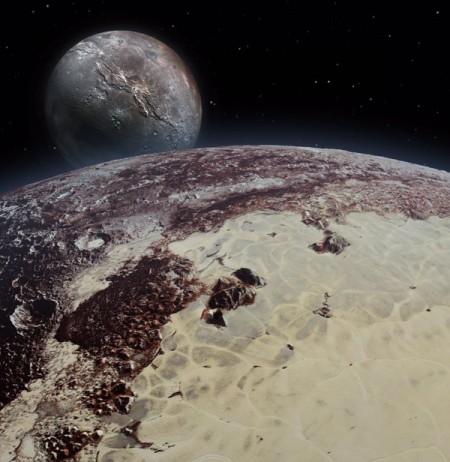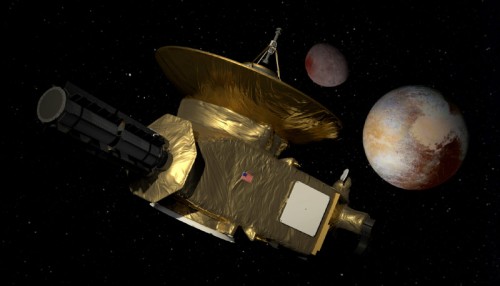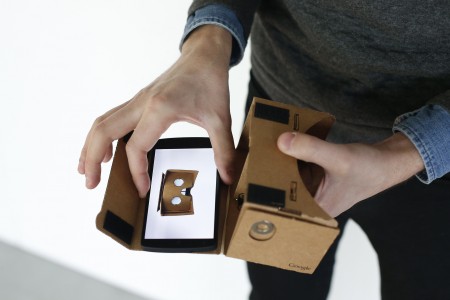April 28, 2016 – Google and The New York Times are partnering to provide a virtual reality film that will give viewers a stereoscopic fly over Pluto. The film, “Seeking Pluto’s Frigid Heart” is narrated by science reporter, Dennis Overbye with original music scored by Graham Roberts. To accompany the virtual reality experience the music and narration have been recorded using a 360 degree microphone allowing the sound to travel with the viewer.
The film is to be out on May 19th along with The New York Times VR app which can be downloaded for free from the Google Play and iOS App Stores. The app supports video streaming. Users can also go to The New York Time YouTube channel and view the video or visit youtube.com/360 for more immersive virtual reality content.
The film follows the journey of the New Horizons spacecraft as it makes its rendezvous with Pluto and its system of moons. Watchers will experience the dwarf planet as never before soaring over its rugged mountains and icy plains. They will even experience landing on the surface where they will be able to view Charon, the system’s largest moon hovering on the horizon.
The use of VR will give viewers a sense of presence not possible through traditional film media. To be one of the 300,000 who received a Google VR Cardboard Viewer you needed to be a digital-only subscriber to the paper. But if you weren’t one of the lucky 300,000 you can buy the viewer from the paper’s website. The headsets are easy to assemble but you need either an Android smartphone or Apple iPhone.
Why pick the Pluto mission to make a VR film?
The NASA New Horizons mission got the public excited again about planetary exploration. Of the original nine, Pluto was the last planet to be visited. When conceived it was still a “planet” but that designation altered to include the word “dwarf” during the time from inception of the mission to the subsequent launch, long flight, and, final rendezvous.
Scientists expected to see an icy primordial remnant of the early Solar System but Pluto surprised them with its complex, diverse and geologically active features. The film will give viewers a ride over icy mountain peaks, nitrogen ice flows, valleys carved from the surface by some viscous icy substance, and dunes bearing a striking resemblance to those seen by the Cassini spacecraft on Titan, Saturn’s largest moon. Expect the VR experience to be quite the ride.
Some scientists believe that the future of space travel to exotic locales will be one where no human will actually go. Instead it will be robots who visit and we, the humans, will experience these places through VR. Maybe this is the first step on the way to many future encounters.











